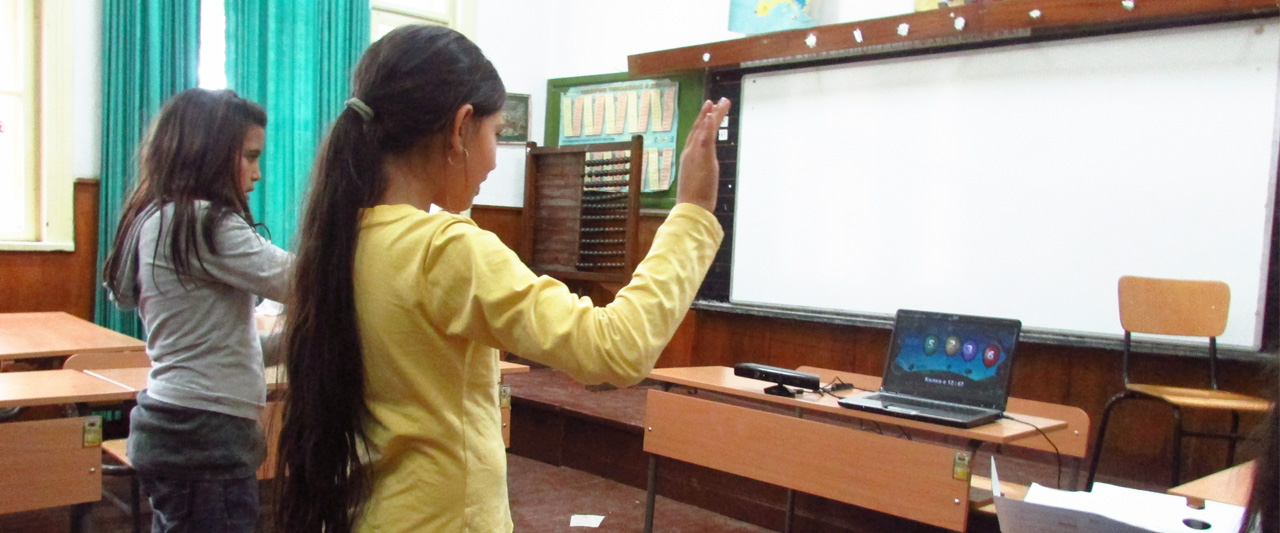
Alexandra Ivanova and Elka Milusheva are Teach for Bulgaria teachers since 2013. During their last few months of the 2013-2014 school year, they had the opportunity to integrate Jumpido in their classes. This is what they share after experiencing Jumpido.
AI: The team of Jumpido presented the software to us around the month of April. Initially I started with Jumpido in semi-boarding group* and I began by setting the rules for using it, to the students who are 7 to 11 years old. Together, with the kids, we discussed the rules for effective work with Jumpido and when and how we can use it and have fun with it in order to achieve better results. Of course, we defined what better results means and it is not constrained only by the math subject knowledge, but is also about the classroom culture and the skills to work as a team.
EM: Solving problems while having fun with Jumpido could happen only if all students had done their homework and they followed the classroom rules. This way, for our classroom, Jumpido turned out to be a good stimulus for doing the homework quickly and following the rules.
AI: The children were fascinated with Jumpido.
When I started the software for the first time to demonstrate how to use it, the first sentence
I heard was: “Miss, you are a magician”. After that, we all became magicians.
We were learning and having fun at the same time. For the children this was a little miracle,
which made them more interested in technologies, mathematics and how all this is happening.
EM: Jumpido helps a lot in developing fast thinking among the students. The software improves the concentration, attention and quickness of calculations. I made a table with the results achieved by each student for each game. What I found out is that the number of correct answers increases with each game. The kids got hooked for the little time they had to play. They evaluated the graphics of the games as "very cool".
AI: In games such as balloons and routes the students have to play in pairs, which allows the teachers the chance to follow which of the students work as a team, whether both are taking part of the exercise and how are they collaborating.
AI: When students work in pairs and form a team, they have to reach to the correct answer together. To do this, they have to communicate and synchronize their movements, which mean they have to follow the first rule we have set, namely "to respect and support each other".
AI: For mixed groups**, similar to those I work with, is necessary to differentiate the goals not only for each grade, but within grades as well. Jumpido made it easier for me, since I could let the pupils from different years to play the same game. This way students who progress faster can play with students older than them and compete, which is an additional motivator.
AI: For the short period of time in which we used Jumpido, there is measurable result in the following areas:
EM: Jumpido is not only a reason for the students to have lasting desire to solve math problems,
but also a way to make mathematics fun, desirable and interesting.
In my opinion, the greatest merit of working with Jumpido is the effective preparation for
the national competition in mathematics. Fourteen of my pupils qualified and we won 1st and 3rd place.
Preparation for mathematics competition is not an easy task, but with Jumpido,
it was a game and most importantly, we achieved good results.
* Semi-boarding groups in Bulgaria are usually groups of students with low income background.
** Mixed groups are groups of students with different years of study, i.e. year 1 and year 2 students study together.
“We recently started to work with Jumpido and I am happy to share that it has established itself as one of the preferred and most effective ways of classroom learning. We noticed significant improvement in the engagement and math skills of children. In my opinion, Jumpido is a great asset to every primary school. I strongly recommend it to anyone who is looking for ways to improve the results and the overall experience of students.”
School principal
“I like the program because it makes math interesting!”
7 years old
“Regular physical activity is important for children because it helps to prevent obesity and improves energy levels. The motions that Jumpido requires have been carefully selected in order to be safe for pupils. Playing Jumpido helps children to have an active lifestyle and enjoy mathematics.”
Kinesiologist
“Jumpido represents what educational technologies should bring to the classroom - increased engagement of students, real value in terms of content and a product which is suitable for all students.”
Advisor to the Minister of Education and Science, Republic of Bulgaria
“In 2011, the team behind Jumpido was the first company in Central and Eastern Europe to become partner of Microsoft's Technology Adoption Program (TAP) for Kinect for Windows. This recognition is offered to only the most motivated and innovative companies after a careful selection process. This makes Jumpido one of the pioneers of using the technology.”
Education Industry Lead, Microsoft